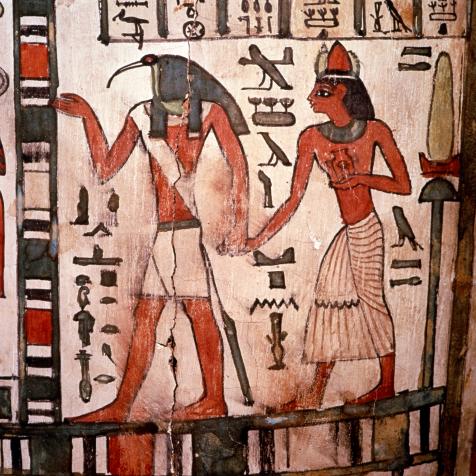
Ratnakorn Piyasirisorost
What's Inside the Secret Chambers in the Pyramids of Giza
A powerful new cosmic ray scan of the Great Pyramid of Giza could finally reveal what’s inside two voids in the structure that have baffled scientists for years.
Egypt is home to more than 100 pyramids, including the 4,500-year-old iconic Giza pyramid which is the last-standing ancient wonder of the world. It is a testament to the ingenuity and craftsmanship of ancient civilizations. The Great Pyramid of Giza has stood tall since 26th Century BC, and took 27 years to build, with around 2.3 million blocks of stone weighing 6 million tons.
Giza is actually made up of three pyramids, Khufu, Khafre, and Menkaure – each one is named after three pharaohs. Now, scientists are using High Energy Physics (HIP) to scan the Khufu structure at Giza. The new technology uses cosmic ray muons to scan deeper into the pyramid than has ever been seen before, and then map its internal structure.
What we see now is only the core structure of the Great Pyramid - the white limestone casing eroded away over time. Although the pyramid has been studied closely for centuries, there are two mysterious voids that have kept archaeologists puzzled.
One void is around 98ft long and 20ft high and could be one large space or several rooms, according to previous scans of the pyramid, while the other is much smaller, just beyond the north face of the pyramid. Archaeologists are not sure what either void functioned as; the most exciting possibility is that the larger space is the hidden burial chamber of Khufu, who reigned from around 2,551BC to 2,528BC.
The voids were discovered in 2017 when a project named Scan Pyramids ran a series of scans that analyzed the cosmic particles that fall to Earth (muons) to detect spaces within the structure. Muons are negatively charged elementary particles that form when cosmic rays collide with the Earth’s atmosphere. They are useful because they behave differently when interacting with stone, or water, versus air.
"We plan to field a telescope system that has upwards of 100 times the sensitivity of the equipment that has recently been used at the Great Pyramid," a team of scientists wrote in a preprint paper – yet to be reviewed by other scientists.
"Since the detectors that are proposed are very large, they cannot be placed inside the pyramid, therefore our approach is to put them outside and move them along the base. In this way, we can collect muons from all angles in order to build up the required data set," the team wrote in the paper.
The technology is so precise, that scientists may be able to even distinguish artifacts within the void.
Finding holes in pyramids isn’t rare, though; Egyptologist Mark Lehner has spoken to previous media outlets about the voids in the past, stating that “The great pyramid of Khufu is more Swiss cheese than cheddar.” Nowadays, though, we have the technology to find out – compared to days gone by when excavations would involve dynamiting the pyramids to explore.


















